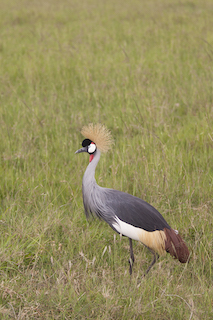Exploring Nature’s Wonders Through Wildlife Safaris
Wildlife safaris have captivated the imaginations of travelers for decades, offering a thrilling opportunity to witness the grandeur of nature up close. These adventures, often set in Africa’s vast and varied landscapes, provide an unparalleled experience of observing animals in their natural habitats. From the sprawling savannas to the dense rainforests, safaris promise a unique blend of excitement and education. In this comprehensive guide, we will delve into what makes wildlife safaris so extraordinary, how to plan the perfect safari, and why they are an invaluable experience for nature enthusiasts and adventurers alike.
Wildlife safaris
Wildlife safaris are expeditions to observe animals in their natural environments, typically conducted in national parks, game reserves, or protected areas. The term safari originates from the Swahili word for journey, and it aptly describes the essence of these adventures—journeys into the wild to witness the beauty and diversity of animal life.
Safaris can vary greatly in terms of style and duration. They range from classic overland safaris, which involve traveling in specially designed vehicles, to walking safaris that offer a more immersive experience on foot. Some safaris are conducted by boat, providing a different perspective of wildlife and their aquatic habitats. Each type of safari offers distinct experiences, catering to different interests and levels of adventure.
The safari experience: What to expect
Wildlife encounters
One of the most exhilarating aspects of wildlife safaris is the opportunity to encounter wildlife in their natural setting. The diversity of animals you might see depends on the region and time of year. In East Africa, the Great Migration is a spectacular event where millions of wildebeest, zebras, and gazelles traverse the Serengeti and Maasai Mara in search of greener pastures. In Southern Africa, you might witness the Big Five—lion, leopard, rhinoceros, elephant, and buffalo—each of which represents a significant challenge for early hunters and now forms the core of many safari experiences.
Bird watchers will also find safaris rewarding, with countless species ranging from the majestic African Fish Eagle to the vibrant Lilac-breasted Roller. The opportunity to see these animals in their natural habitats offers a profound connection with nature that is hard to replicate elsewhere.
Scenic beauty
Beyond wildlife, safaris provide breathtaking views of diverse landscapes. The vast plains of the Serengeti, the lush wetlands of the Okavango Delta, and the dramatic escarpments of the Ngorongoro Crater all offer stunning backdrops to your adventure. These landscapes are not only beautiful but also integral to the ecosystems that support wildlife.
Cultural insights
Many safari destinations also offer cultural experiences, providing insights into the lives of local communities. Interactions with indigenous tribes, such as the Maasai of Kenya or the San people of Botswana, can enrich your understanding of how human cultures coexist with wildlife. These encounters can offer a deeper appreciation for the delicate balance between conservation and traditional ways of life.
Planning your safari
Choosing the right destination
Selecting a safari destination is the first step in planning your adventure. Each region has its own unique appeal. East Africa, with countries like Kenya and Tanzania, is renowned for its incredible wildlife and dramatic landscapes. Southern Africa, including South Africa, Botswana, and Namibia, offers a different experience with its varied terrain and excellent game viewing.
When choosing a destination, consider what wildlife you are most interested in seeing and the type of experience you want. Some areas are known for specific animals or events, such as the migration in the Serengeti or the high density of big cats in South Africa’s Kruger National Park.
Best time to go
The timing of your safari can greatly affect your experience. Wildlife viewing is often best during the dry season when animals congregate around water sources, making them easier to spot. In East Africa, the dry season typically runs from June to October, while in Southern Africa, it is from May to September. However, the wet season has its own advantages, such as fewer tourists and lush landscapes.
Types of safaris
Different types of safaris cater to varying interests and comfort levels:
-
- Overland safaris: These safaris involve traveling in specialised vehicles designed for game viewing. They offer comfort and protection while allowing for extensive exploration.
- Walking safaris: For a more immersive experience, walking safaris offer the chance to get closer to nature. Guided by experienced rangers, these safaris allow you to observe wildlife tracks, plants, and smaller creatures that might be missed from a vehicle.
- Boat safaris: These are ideal for exploring river systems and wetlands. They offer a unique perspective and can be particularly rewarding in areas like the Okavango Delta.
- Fly-in safaris: For a luxury experience, fly-in safaris involve traveling between remote camps by light aircraft. This option offers convenience and access to less frequented areas.
Wildlife conservation and ethical considerations
Wildlife safaris play a significant role in conservation efforts. Tourism generates revenue that supports national parks and reserves, providing funds for anti-poaching initiatives and habitat preservation. When planned and conducted responsibly, safaris can contribute positively to the environment and local communities.
However, it is crucial to choose operators who prioritise ethical practices. Avoid companies that exploit wildlife or disrupt natural behaviors. Opt for operators who follow strict guidelines for wildlife viewing and support conservation efforts. Responsible tourism helps ensure that safari experiences are sustainable and beneficial for both wildlife and local communities.
Essential tips for a successful safari
Preparation and packing
Preparing for a safari involves more than just packing your bags. Consider the following:
-
- Clothing: Lightweight, breathable clothing in neutral colours is ideal. Bright colours or patterns can disturb wildlife.
- Health precautions: Depending on your destination, you may need vaccinations or malaria prophylaxis. Consult a travel health specialist before your trip.
- Gear: Binoculars and a good camera with zoom lenses are essential for wildlife viewing. Don’t forget a hat, sunscreen, and insect repellent.
- Travel documents: Ensure you have the necessary visas and travel insurance. Keep a copy of important documents in case of loss or theft.
Respecting wildlife
Maintain a safe distance from animals and never attempt to feed or touch them. Follow the guidance of your safari guide, who will help ensure that your presence does not disrupt the wildlife. Remember, the goal of a safari is to observe and appreciate, not to interfere with the natural behaviours of the animals.
Wildlife safaris in the nature
Wildlife safaris offer an extraordinary way to connect with nature and experience the thrill of observing animals in their natural habitats. Whether you are drawn to the majestic herds of the Serengeti, the rich biodiversity of the Okavango Delta, or the dramatic landscapes of South Africa, safaris provide an unforgettable adventure. By choosing the right destination, understanding the best times to visit, and respecting ethical guidelines, you can ensure a meaningful and impactful safari experience. As you embark on this journey, you will not only witness the wonders of wildlife but also contribute to the conservation efforts that help preserve these incredible environments for future generations.





